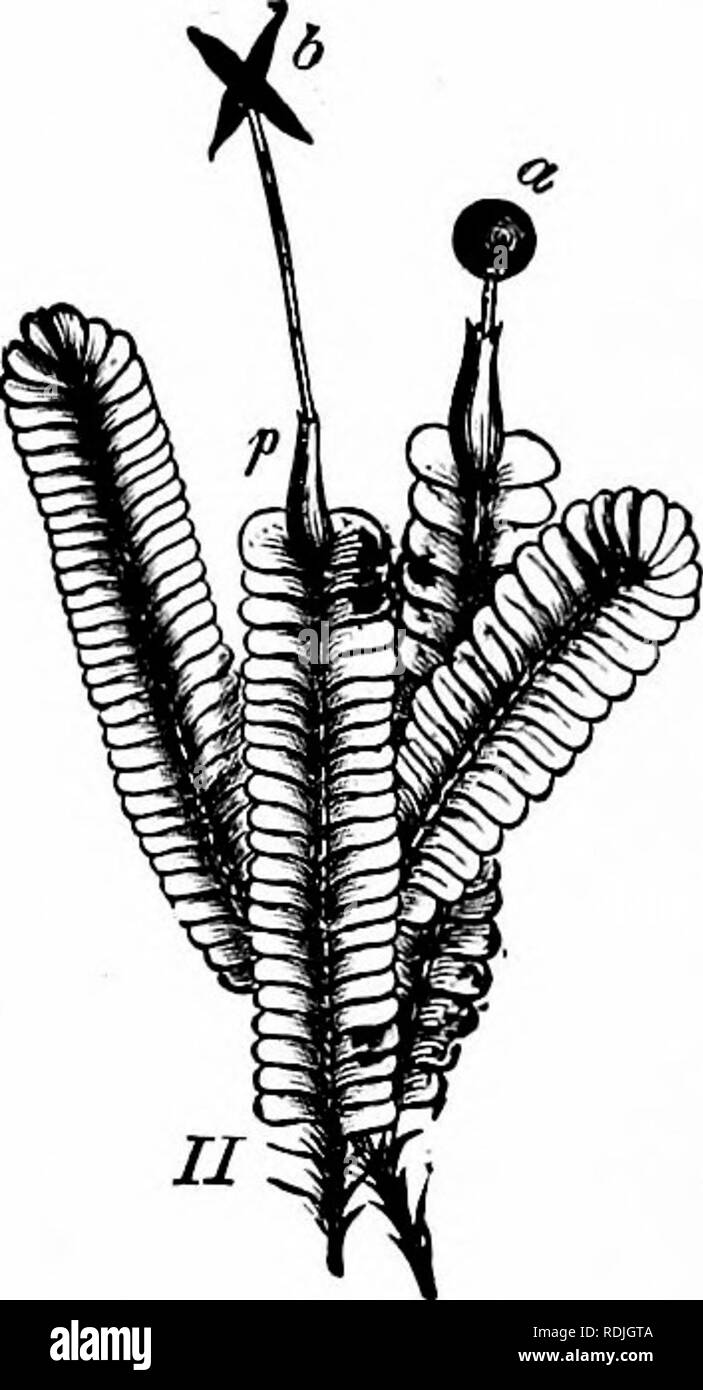. The essentials of botany. Botany. Fi». 101.—I, a thalloid LiTerwort; Band C, showing bud-cups, natural size; D, enlarged to show breathing-pores. i7, a leafy-stemmed laverwort; a, unnpe, and 6, ripened and split, spore-fruit. the leaves, however, have no midrib or other veins, and consist of a single layer of cells. The development of the stem is always from a single apical cell, which repeatedly divides. 387. The asexual reproduction of Liverworts takes place by means of peculiar bodies, the bads (or gemmae) so fre- quently to be seen in the Common Liverwort (Marchantia polymorpha). In the

Image details
Contributor:
The Book Worm / Alamy Stock PhotoImage ID:
RDJGTAFile size:
7.2 MB (227.8 KB Compressed download)Releases:
Model - no | Property - noDo I need a release?Dimensions:
1163 x 2149 px | 19.7 x 36.4 cm | 7.8 x 14.3 inches | 150dpiMore information:
This image is a public domain image, which means either that copyright has expired in the image or the copyright holder has waived their copyright. Alamy charges you a fee for access to the high resolution copy of the image.
This image could have imperfections as it’s either historical or reportage.
. The essentials of botany. Botany. Fi». 101.—I, a thalloid LiTerwort; Band C, showing bud-cups, natural size; D, enlarged to show breathing-pores. i7, a leafy-stemmed laverwort; a, unnpe, and 6, ripened and split, spore-fruit. the leaves, however, have no midrib or other veins, and consist of a single layer of cells. The development of the stem is always from a single apical cell, which repeatedly divides. 387. The asexual reproduction of Liverworts takes place by means of peculiar bodies, the bads (or gemmae) so fre- quently to be seen in the Common Liverwort (Marchantia polymorpha). In the latter plant they are little stalked. Please note that these images are extracted from scanned page images that may have been digitally enhanced for readability - coloration and appearance of these illustrations may not perfectly resemble the original work.. Bessey, Charles E. (Charles Edwin), 1845-1915. New York : H. Holt and company, ;